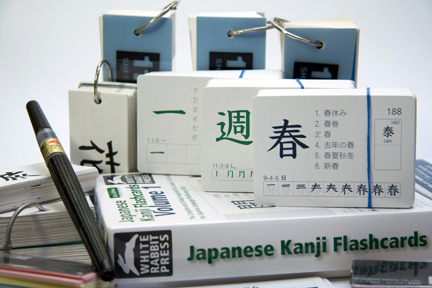Every once in a while I like to revisit the rules of Japanese pronunciation, since the language can be tricky. First, understand that Japanese is a syllable-based language, meaning that sounds always come in consonant + vowel syllable pairs (e.g. ka, ki, ku, ke, or ko, never just a “k” sound by itself), or as a single vowel syllable. The exception is the letter n, the only consonant that can appear by itself, without which we wouldn’t have the word “ramen” (and that would be a travesty). Vowels are easy as pie in Japanese — there are only five, identical to the ones in Spanish: A – “ah” rhyming with “fall”
I – “ee” rhyming with “feel”
U – “oo” rhyming with “fool”
E – “eh” rhyming with “let”
O – “oh” rhyming with “go” Some things to keep in mind. First of all, discard if you can the spelling rules of English, like “silent e” on the ends of words. Every syllable is pronounced, so that the last name of voice actress Yui Horie would be pronounced “ho-ri-eh.” There is no short “a” sound (as in “cat”) in Japanese, so if you find yourself saying words like kanji (Chinese characters) or the final syllable of ichi man (the number 10,000) like the word “at” or “fan,” try to say “KAHN-ji” and “ee-chi MAHN” instead. If you’re interested in learning Japanese, I always recommend textbooks and study guides that force you to work in the “native” Japanese writing system, hiragana, as its much easier to pronounce well if you move away from Romanized Japanese. The Kanji Practice Flashcards from White Rabbit and the Genki Japanese textbooks both use kana are both good for learning as they avoid writing any Japanese words in the Roman alphabet, forcing you to learn to read and pronounce correctly.















